-
EXECUTIVE SUMMARY
-
Market Overview
-
Key Findings
-
Market Segmentation
-
Competitive Landscape
-
Challenges and Opportunities
-
Future Outlook
-
MARKET INTRODUCTION
-
Definition
-
Scope of the study
- Research Objective
- Assumption
- Limitations
-
RESEARCH METHODOLOGY
-
Overview
-
Data Mining
-
Secondary Research
-
Primary Research
- Primary Interviews and Information Gathering Process
- Breakdown of Primary Respondents
-
Forecasting Model
-
Market Size Estimation
- Bottom-Up Approach
- Top-Down Approach
-
Data Triangulation
-
Validation
-
MARKET DYNAMICS
-
Overview
-
Drivers
-
Restraints
-
Opportunities
-
MARKET FACTOR ANALYSIS
-
Value chain Analysis
-
Porter's Five Forces Analysis
- Bargaining Power of Suppliers
- Bargaining Power of Buyers
- Threat of New Entrants
- Threat of Substitutes
- Intensity of Rivalry
-
COVID-19 Impact Analysis
- Market Impact Analysis
- Regional Impact
- Opportunity and Threat Analysis
-
MOLECULAR DIAGNOSTICS MARKET, BY APPLICATION (USD BILLION)
-
Oncology
-
Infectious Diseases
-
Genetic Testing
-
Blood Screening
-
Other Applications
-
MOLECULAR DIAGNOSTICS MARKET, BY TECHNOLOGY (USD BILLION)
-
Polymerase Chain Reaction
-
Next-Generation Sequencing
-
Microarrays
-
In Situ Hybridization
-
Other Technologies
-
MOLECULAR DIAGNOSTICS MARKET, BY PRODUCT TYPE (USD BILLION)
-
Reagents
-
Instruments
-
Software
-
Consumables
-
Other Products
-
MOLECULAR DIAGNOSTICS MARKET, BY END USER (USD BILLION)
-
Hospitals
-
Diagnostic Laboratories
-
Academic Institutions
-
Pharmaceutical Companies
-
Other End Users
-
MOLECULAR DIAGNOSTICS MARKET, BY REGIONAL (USD BILLION)
-
North America
- US
- Canada
-
Europe
- Germany
- UK
- France
- Russia
- Italy
- Spain
- Rest of Europe
-
APAC
- China
- India
- Japan
- South Korea
- Malaysia
- Thailand
- Indonesia
- Rest of APAC
-
South America
- Brazil
- Mexico
- Argentina
- Rest of South America
-
MEA
- GCC Countries
- South Africa
- Rest of MEA
-
COMPETITIVE LANDSCAPE
-
Overview
-
Competitive Analysis
-
Market share Analysis
-
Major Growth Strategy in the Molecular Diagnostics Market
-
Competitive Benchmarking
-
Leading Players in Terms of Number of Developments in the Molecular Diagnostics Market
-
Key developments and growth strategies
- New Product Launch/Service Deployment
- Merger & Acquisitions
- Joint Ventures
-
Major Players Financial Matrix
- Sales and Operating Income
- Major Players R&D Expenditure. 2023
-
COMPANY PROFILES
-
Abbott Laboratories
- Financial Overview
- Products Offered
- Key Developments
- SWOT Analysis
- Key Strategies
-
Luminex Corporation
- Financial Overview
- Products Offered
- Key Developments
- SWOT Analysis
- Key Strategies
-
Myriad Genetics
- Financial Overview
- Products Offered
- Key Developments
- SWOT Analysis
- Key Strategies
-
Becton Dickinson and Company
- Financial Overview
- Products Offered
- Key Developments
- SWOT Analysis
- Key Strategies
-
Thermo Fisher Scientific
- Financial Overview
- Products Offered
- Key Developments
- SWOT Analysis
- Key Strategies
-
BioMerieux SA
- Financial Overview
- Products Offered
- Key Developments
- SWOT Analysis
- Key Strategies
-
Genomic Health
- Financial Overview
- Products Offered
- Key Developments
- SWOT Analysis
- Key Strategies
-
Danaher Corporation
- Financial Overview
- Products Offered
- Key Developments
- SWOT Analysis
- Key Strategies
-
Roche Holding AG
- Financial Overview
- Products Offered
- Key Developments
- SWOT Analysis
- Key Strategies
-
Illumina, Inc.
- Financial Overview
- Products Offered
- Key Developments
- SWOT Analysis
- Key Strategies
-
Asuragen, Inc.
- Financial Overview
- Products Offered
- Key Developments
- SWOT Analysis
- Key Strategies
-
Agilent Technologies
- Financial Overview
- Products Offered
- Key Developments
- SWOT Analysis
- Key Strategies
-
Hologic, Inc.
- Financial Overview
- Products Offered
- Key Developments
- SWOT Analysis
- Key Strategies
-
Qiagen N.V.
- Financial Overview
- Products Offered
- Key Developments
- SWOT Analysis
- Key Strategies
-
APPENDIX
-
References
-
Related Reports
-
LIST OF TABLES
-
LIST OF ASSUMPTIONS
-
NORTH AMERICA MOLECULAR DIAGNOSTICS MARKET SIZE ESTIMATES & FORECAST, BY APPLICATION, 2019-2035 (USD BILLIONS)
-
NORTH AMERICA MOLECULAR DIAGNOSTICS MARKET SIZE ESTIMATES & FORECAST, BY TECHNOLOGY, 2019-2035 (USD BILLIONS)
-
NORTH AMERICA MOLECULAR DIAGNOSTICS MARKET SIZE ESTIMATES & FORECAST, BY PRODUCT TYPE, 2019-2035 (USD BILLIONS)
-
NORTH AMERICA MOLECULAR DIAGNOSTICS MARKET SIZE ESTIMATES & FORECAST, BY END USER, 2019-2035 (USD BILLIONS)
-
NORTH AMERICA MOLECULAR DIAGNOSTICS MARKET SIZE ESTIMATES & FORECAST, BY REGIONAL, 2019-2035 (USD BILLIONS)
-
US MOLECULAR DIAGNOSTICS MARKET SIZE ESTIMATES & FORECAST, BY APPLICATION, 2019-2035 (USD BILLIONS)
-
US MOLECULAR DIAGNOSTICS MARKET SIZE ESTIMATES & FORECAST, BY TECHNOLOGY, 2019-2035 (USD BILLIONS)
-
US MOLECULAR DIAGNOSTICS MARKET SIZE ESTIMATES & FORECAST, BY PRODUCT TYPE, 2019-2035 (USD BILLIONS)
-
US MOLECULAR DIAGNOSTICS MARKET SIZE ESTIMATES & FORECAST, BY END USER, 2019-2035 (USD BILLIONS)
-
US MOLECULAR DIAGNOSTICS MARKET SIZE ESTIMATES & FORECAST, BY REGIONAL, 2019-2035 (USD BILLIONS)
-
CANADA MOLECULAR DIAGNOSTICS MARKET SIZE ESTIMATES & FORECAST, BY APPLICATION, 2019-2035 (USD BILLIONS)
-
CANADA MOLECULAR DIAGNOSTICS MARKET SIZE ESTIMATES & FORECAST, BY TECHNOLOGY, 2019-2035 (USD BILLIONS)
-
CANADA MOLECULAR DIAGNOSTICS MARKET SIZE ESTIMATES & FORECAST, BY PRODUCT TYPE, 2019-2035 (USD BILLIONS)
-
CANADA MOLECULAR DIAGNOSTICS MARKET SIZE ESTIMATES & FORECAST, BY END USER, 2019-2035 (USD BILLIONS)
-
CANADA MOLECULAR DIAGNOSTICS MARKET SIZE ESTIMATES & FORECAST, BY REGIONAL, 2019-2035 (USD BILLIONS)
-
EUROPE MOLECULAR DIAGNOSTICS MARKET SIZE ESTIMATES & FORECAST, BY APPLICATION, 2019-2035 (USD BILLIONS)
-
EUROPE MOLECULAR DIAGNOSTICS MARKET SIZE ESTIMATES & FORECAST, BY TECHNOLOGY, 2019-2035 (USD BILLIONS)
-
EUROPE MOLECULAR DIAGNOSTICS MARKET SIZE ESTIMATES & FORECAST, BY PRODUCT TYPE, 2019-2035 (USD BILLIONS)
-
EUROPE MOLECULAR DIAGNOSTICS MARKET SIZE ESTIMATES & FORECAST, BY END USER, 2019-2035 (USD BILLIONS)
-
EUROPE MOLECULAR DIAGNOSTICS MARKET SIZE ESTIMATES & FORECAST, BY REGIONAL, 2019-2035 (USD BILLIONS)
-
GERMANY MOLECULAR DIAGNOSTICS MARKET SIZE ESTIMATES & FORECAST, BY APPLICATION, 2019-2035 (USD BILLIONS)
-
GERMANY MOLECULAR DIAGNOSTICS MARKET SIZE ESTIMATES & FORECAST, BY TECHNOLOGY, 2019-2035 (USD BILLIONS)
-
GERMANY MOLECULAR DIAGNOSTICS MARKET SIZE ESTIMATES & FORECAST, BY PRODUCT TYPE, 2019-2035 (USD BILLIONS)
-
GERMANY MOLECULAR DIAGNOSTICS MARKET SIZE ESTIMATES & FORECAST, BY END USER, 2019-2035 (USD BILLIONS)
-
GERMANY MOLECULAR DIAGNOSTICS MARKET SIZE ESTIMATES & FORECAST, BY REGIONAL, 2019-2035 (USD BILLIONS)
-
UK MOLECULAR DIAGNOSTICS MARKET SIZE ESTIMATES & FORECAST, BY APPLICATION, 2019-2035 (USD BILLIONS)
-
UK MOLECULAR DIAGNOSTICS MARKET SIZE ESTIMATES & FORECAST, BY TECHNOLOGY, 2019-2035 (USD BILLIONS)
-
UK MOLECULAR DIAGNOSTICS MARKET SIZE ESTIMATES & FORECAST, BY PRODUCT TYPE, 2019-2035 (USD BILLIONS)
-
UK MOLECULAR DIAGNOSTICS MARKET SIZE ESTIMATES & FORECAST, BY END USER, 2019-2035 (USD BILLIONS)
-
UK MOLECULAR DIAGNOSTICS MARKET SIZE ESTIMATES & FORECAST, BY REGIONAL, 2019-2035 (USD BILLIONS)
-
FRANCE MOLECULAR DIAGNOSTICS MARKET SIZE ESTIMATES & FORECAST, BY APPLICATION, 2019-2035 (USD BILLIONS)
-
FRANCE MOLECULAR DIAGNOSTICS MARKET SIZE ESTIMATES & FORECAST, BY TECHNOLOGY, 2019-2035 (USD BILLIONS)
-
FRANCE MOLECULAR DIAGNOSTICS MARKET SIZE ESTIMATES & FORECAST, BY PRODUCT TYPE, 2019-2035 (USD BILLIONS)
-
FRANCE MOLECULAR DIAGNOSTICS MARKET SIZE ESTIMATES & FORECAST, BY END USER, 2019-2035 (USD BILLIONS)
-
FRANCE MOLECULAR DIAGNOSTICS MARKET SIZE ESTIMATES & FORECAST, BY REGIONAL, 2019-2035 (USD BILLIONS)
-
RUSSIA MOLECULAR DIAGNOSTICS MARKET SIZE ESTIMATES & FORECAST, BY APPLICATION, 2019-2035 (USD BILLIONS)
-
RUSSIA MOLECULAR DIAGNOSTICS MARKET SIZE ESTIMATES & FORECAST, BY TECHNOLOGY, 2019-2035 (USD BILLIONS)
-
RUSSIA MOLECULAR DIAGNOSTICS MARKET SIZE ESTIMATES & FORECAST, BY PRODUCT TYPE, 2019-2035 (USD BILLIONS)
-
RUSSIA MOLECULAR DIAGNOSTICS MARKET SIZE ESTIMATES & FORECAST, BY END USER, 2019-2035 (USD BILLIONS)
-
RUSSIA MOLECULAR DIAGNOSTICS MARKET SIZE ESTIMATES & FORECAST, BY REGIONAL, 2019-2035 (USD BILLIONS)
-
ITALY MOLECULAR DIAGNOSTICS MARKET SIZE ESTIMATES & FORECAST, BY APPLICATION, 2019-2035 (USD BILLIONS)
-
ITALY MOLECULAR DIAGNOSTICS MARKET SIZE ESTIMATES & FORECAST, BY TECHNOLOGY, 2019-2035 (USD BILLIONS)
-
ITALY MOLECULAR DIAGNOSTICS MARKET SIZE ESTIMATES & FORECAST, BY PRODUCT TYPE, 2019-2035 (USD BILLIONS)
-
ITALY MOLECULAR DIAGNOSTICS MARKET SIZE ESTIMATES & FORECAST, BY END USER, 2019-2035 (USD BILLIONS)
-
ITALY MOLECULAR DIAGNOSTICS MARKET SIZE ESTIMATES & FORECAST, BY REGIONAL, 2019-2035 (USD BILLIONS)
-
SPAIN MOLECULAR DIAGNOSTICS MARKET SIZE ESTIMATES & FORECAST, BY APPLICATION, 2019-2035 (USD BILLIONS)
-
SPAIN MOLECULAR DIAGNOSTICS MARKET SIZE ESTIMATES & FORECAST, BY TECHNOLOGY, 2019-2035 (USD BILLIONS)
-
SPAIN MOLECULAR DIAGNOSTICS MARKET SIZE ESTIMATES & FORECAST, BY PRODUCT TYPE, 2019-2035 (USD BILLIONS)
-
SPAIN MOLECULAR DIAGNOSTICS MARKET SIZE ESTIMATES & FORECAST, BY END USER, 2019-2035 (USD BILLIONS)
-
SPAIN MOLECULAR DIAGNOSTICS MARKET SIZE ESTIMATES & FORECAST, BY REGIONAL, 2019-2035 (USD BILLIONS)
-
REST OF EUROPE MOLECULAR DIAGNOSTICS MARKET SIZE ESTIMATES & FORECAST, BY APPLICATION, 2019-2035 (USD BILLIONS)
-
REST OF EUROPE MOLECULAR DIAGNOSTICS MARKET SIZE ESTIMATES & FORECAST, BY TECHNOLOGY, 2019-2035 (USD BILLIONS)
-
REST OF EUROPE MOLECULAR DIAGNOSTICS MARKET SIZE ESTIMATES & FORECAST, BY PRODUCT TYPE, 2019-2035 (USD BILLIONS)
-
REST OF EUROPE MOLECULAR DIAGNOSTICS MARKET SIZE ESTIMATES & FORECAST, BY END USER, 2019-2035 (USD BILLIONS)
-
REST OF EUROPE MOLECULAR DIAGNOSTICS MARKET SIZE ESTIMATES & FORECAST, BY REGIONAL, 2019-2035 (USD BILLIONS)
-
APAC MOLECULAR DIAGNOSTICS MARKET SIZE ESTIMATES & FORECAST, BY APPLICATION, 2019-2035 (USD BILLIONS)
-
APAC MOLECULAR DIAGNOSTICS MARKET SIZE ESTIMATES & FORECAST, BY TECHNOLOGY, 2019-2035 (USD BILLIONS)
-
APAC MOLECULAR DIAGNOSTICS MARKET SIZE ESTIMATES & FORECAST, BY PRODUCT TYPE, 2019-2035 (USD BILLIONS)
-
APAC MOLECULAR DIAGNOSTICS MARKET SIZE ESTIMATES & FORECAST, BY END USER, 2019-2035 (USD BILLIONS)
-
APAC MOLECULAR DIAGNOSTICS MARKET SIZE ESTIMATES & FORECAST, BY REGIONAL, 2019-2035 (USD BILLIONS)
-
CHINA MOLECULAR DIAGNOSTICS MARKET SIZE ESTIMATES & FORECAST, BY APPLICATION, 2019-2035 (USD BILLIONS)
-
CHINA MOLECULAR DIAGNOSTICS MARKET SIZE ESTIMATES & FORECAST, BY TECHNOLOGY, 2019-2035 (USD BILLIONS)
-
CHINA MOLECULAR DIAGNOSTICS MARKET SIZE ESTIMATES & FORECAST, BY PRODUCT TYPE, 2019-2035 (USD BILLIONS)
-
CHINA MOLECULAR DIAGNOSTICS MARKET SIZE ESTIMATES & FORECAST, BY END USER, 2019-2035 (USD BILLIONS)
-
CHINA MOLECULAR DIAGNOSTICS MARKET SIZE ESTIMATES & FORECAST, BY REGIONAL, 2019-2035 (USD BILLIONS)
-
INDIA MOLECULAR DIAGNOSTICS MARKET SIZE ESTIMATES & FORECAST, BY APPLICATION, 2019-2035 (USD BILLIONS)
-
INDIA MOLECULAR DIAGNOSTICS MARKET SIZE ESTIMATES & FORECAST, BY TECHNOLOGY, 2019-2035 (USD BILLIONS)
-
INDIA MOLECULAR DIAGNOSTICS MARKET SIZE ESTIMATES & FORECAST, BY PRODUCT TYPE, 2019-2035 (USD BILLIONS)
-
INDIA MOLECULAR DIAGNOSTICS MARKET SIZE ESTIMATES & FORECAST, BY END USER, 2019-2035 (USD BILLIONS)
-
INDIA MOLECULAR DIAGNOSTICS MARKET SIZE ESTIMATES & FORECAST, BY REGIONAL, 2019-2035 (USD BILLIONS)
-
JAPAN MOLECULAR DIAGNOSTICS MARKET SIZE ESTIMATES & FORECAST, BY APPLICATION, 2019-2035 (USD BILLIONS)
-
JAPAN MOLECULAR DIAGNOSTICS MARKET SIZE ESTIMATES & FORECAST, BY TECHNOLOGY, 2019-2035 (USD BILLIONS)
-
JAPAN MOLECULAR DIAGNOSTICS MARKET SIZE ESTIMATES & FORECAST, BY PRODUCT TYPE, 2019-2035 (USD BILLIONS)
-
JAPAN MOLECULAR DIAGNOSTICS MARKET SIZE ESTIMATES & FORECAST, BY END USER, 2019-2035 (USD BILLIONS)
-
JAPAN MOLECULAR DIAGNOSTICS MARKET SIZE ESTIMATES & FORECAST, BY REGIONAL, 2019-2035 (USD BILLIONS)
-
SOUTH KOREA MOLECULAR DIAGNOSTICS MARKET SIZE ESTIMATES & FORECAST, BY APPLICATION, 2019-2035 (USD BILLIONS)
-
SOUTH KOREA MOLECULAR DIAGNOSTICS MARKET SIZE ESTIMATES & FORECAST, BY TECHNOLOGY, 2019-2035 (USD BILLIONS)
-
SOUTH KOREA MOLECULAR DIAGNOSTICS MARKET SIZE ESTIMATES & FORECAST, BY PRODUCT TYPE, 2019-2035 (USD BILLIONS)
-
SOUTH KOREA MOLECULAR DIAGNOSTICS MARKET SIZE ESTIMATES & FORECAST, BY END USER, 2019-2035 (USD BILLIONS)
-
SOUTH KOREA MOLECULAR DIAGNOSTICS MARKET SIZE ESTIMATES & FORECAST, BY REGIONAL, 2019-2035 (USD BILLIONS)
-
MALAYSIA MOLECULAR DIAGNOSTICS MARKET SIZE ESTIMATES & FORECAST, BY APPLICATION, 2019-2035 (USD BILLIONS)
-
MALAYSIA MOLECULAR DIAGNOSTICS MARKET SIZE ESTIMATES & FORECAST, BY TECHNOLOGY, 2019-2035 (USD BILLIONS)
-
MALAYSIA MOLECULAR DIAGNOSTICS MARKET SIZE ESTIMATES & FORECAST, BY PRODUCT TYPE, 2019-2035 (USD BILLIONS)
-
MALAYSIA MOLECULAR DIAGNOSTICS MARKET SIZE ESTIMATES & FORECAST, BY END USER, 2019-2035 (USD BILLIONS)
-
MALAYSIA MOLECULAR DIAGNOSTICS MARKET SIZE ESTIMATES & FORECAST, BY REGIONAL, 2019-2035 (USD BILLIONS)
-
THAILAND MOLECULAR DIAGNOSTICS MARKET SIZE ESTIMATES & FORECAST, BY APPLICATION, 2019-2035 (USD BILLIONS)
-
THAILAND MOLECULAR DIAGNOSTICS MARKET SIZE ESTIMATES & FORECAST, BY TECHNOLOGY, 2019-2035 (USD BILLIONS)
-
THAILAND MOLECULAR DIAGNOSTICS MARKET SIZE ESTIMATES & FORECAST, BY PRODUCT TYPE, 2019-2035 (USD BILLIONS)
-
THAILAND MOLECULAR DIAGNOSTICS MARKET SIZE ESTIMATES & FORECAST, BY END USER, 2019-2035 (USD BILLIONS)
-
THAILAND MOLECULAR DIAGNOSTICS MARKET SIZE ESTIMATES & FORECAST, BY REGIONAL, 2019-2035 (USD BILLIONS)
-
INDONESIA MOLECULAR DIAGNOSTICS MARKET SIZE ESTIMATES & FORECAST, BY APPLICATION, 2019-2035 (USD BILLIONS)
-
INDONESIA MOLECULAR DIAGNOSTICS MARKET SIZE ESTIMATES & FORECAST, BY TECHNOLOGY, 2019-2035 (USD BILLIONS)
-
INDONESIA MOLECULAR DIAGNOSTICS MARKET SIZE ESTIMATES & FORECAST, BY PRODUCT TYPE, 2019-2035 (USD BILLIONS)
-
INDONESIA MOLECULAR DIAGNOSTICS MARKET SIZE ESTIMATES & FORECAST, BY END USER, 2019-2035 (USD BILLIONS)
-
INDONESIA MOLECULAR DIAGNOSTICS MARKET SIZE ESTIMATES & FORECAST, BY REGIONAL, 2019-2035 (USD BILLIONS)
-
REST OF APAC MOLECULAR DIAGNOSTICS MARKET SIZE ESTIMATES & FORECAST, BY APPLICATION, 2019-2035 (USD BILLIONS)
-
REST OF APAC MOLECULAR DIAGNOSTICS MARKET SIZE ESTIMATES & FORECAST, BY TECHNOLOGY, 2019-2035 (USD BILLIONS)
-
REST OF APAC MOLECULAR DIAGNOSTICS MARKET SIZE ESTIMATES & FORECAST, BY PRODUCT TYPE, 2019-2035 (USD BILLIONS)
-
REST OF APAC MOLECULAR DIAGNOSTICS MARKET SIZE ESTIMATES & FORECAST, BY END USER, 2019-2035 (USD BILLIONS)
-
REST OF APAC MOLECULAR DIAGNOSTICS MARKET SIZE ESTIMATES & FORECAST, BY REGIONAL, 2019-2035 (USD BILLIONS)
-
SOUTH AMERICA MOLECULAR DIAGNOSTICS MARKET SIZE ESTIMATES & FORECAST, BY APPLICATION, 2019-2035 (USD BILLIONS)
-
SOUTH AMERICA MOLECULAR DIAGNOSTICS MARKET SIZE ESTIMATES & FORECAST, BY TECHNOLOGY, 2019-2035 (USD BILLIONS)
-
SOUTH AMERICA MOLECULAR DIAGNOSTICS MARKET SIZE ESTIMATES & FORECAST, BY PRODUCT TYPE, 2019-2035 (USD BILLIONS)
-
SOUTH AMERICA MOLECULAR DIAGNOSTICS MARKET SIZE ESTIMATES & FORECAST, BY END USER, 2019-2035 (USD BILLIONS)
-
SOUTH AMERICA MOLECULAR DIAGNOSTICS MARKET SIZE ESTIMATES & FORECAST, BY REGIONAL, 2019-2035 (USD BILLIONS)
-
BRAZIL MOLECULAR DIAGNOSTICS MARKET SIZE ESTIMATES & FORECAST, BY APPLICATION, 2019-2035 (USD BILLIONS)
-
BRAZIL MOLECULAR DIAGNOSTICS MARKET SIZE ESTIMATES & FORECAST, BY TECHNOLOGY, 2019-2035 (USD BILLIONS)
-
BRAZIL MOLECULAR DIAGNOSTICS MARKET SIZE ESTIMATES & FORECAST, BY PRODUCT TYPE, 2019-2035 (USD BILLIONS)
-
BRAZIL MOLECULAR DIAGNOSTICS MARKET SIZE ESTIMATES & FORECAST, BY END USER, 2019-2035 (USD BILLIONS)
-
BRAZIL MOLECULAR DIAGNOSTICS MARKET SIZE ESTIMATES & FORECAST, BY REGIONAL, 2019-2035 (USD BILLIONS)
-
MEXICO MOLECULAR DIAGNOSTICS MARKET SIZE ESTIMATES & FORECAST, BY APPLICATION, 2019-2035 (USD BILLIONS)
-
MEXICO MOLECULAR DIAGNOSTICS MARKET SIZE ESTIMATES & FORECAST, BY TECHNOLOGY, 2019-2035 (USD BILLIONS)
-
MEXICO MOLECULAR DIAGNOSTICS MARKET SIZE ESTIMATES & FORECAST, BY PRODUCT TYPE, 2019-2035 (USD BILLIONS)
-
MEXICO MOLECULAR DIAGNOSTICS MARKET SIZE ESTIMATES & FORECAST, BY END USER, 2019-2035 (USD BILLIONS)
-
MEXICO MOLECULAR DIAGNOSTICS MARKET SIZE ESTIMATES & FORECAST, BY REGIONAL, 2019-2035 (USD BILLIONS)
-
ARGENTINA MOLECULAR DIAGNOSTICS MARKET SIZE ESTIMATES & FORECAST, BY APPLICATION, 2019-2035 (USD BILLIONS)
-
ARGENTINA MOLECULAR DIAGNOSTICS MARKET SIZE ESTIMATES & FORECAST, BY TECHNOLOGY, 2019-2035 (USD BILLIONS)
-
ARGENTINA MOLECULAR DIAGNOSTICS MARKET SIZE ESTIMATES & FORECAST, BY PRODUCT TYPE, 2019-2035 (USD BILLIONS)
-
ARGENTINA MOLECULAR DIAGNOSTICS MARKET SIZE ESTIMATES & FORECAST, BY END USER, 2019-2035 (USD BILLIONS)
-
ARGENTINA MOLECULAR DIAGNOSTICS MARKET SIZE ESTIMATES & FORECAST, BY REGIONAL, 2019-2035 (USD BILLIONS)
-
REST OF SOUTH AMERICA MOLECULAR DIAGNOSTICS MARKET SIZE ESTIMATES & FORECAST, BY APPLICATION, 2019-2035 (USD BILLIONS)
-
REST OF SOUTH AMERICA MOLECULAR DIAGNOSTICS MARKET SIZE ESTIMATES & FORECAST, BY TECHNOLOGY, 2019-2035 (USD BILLIONS)
-
REST OF SOUTH AMERICA MOLECULAR DIAGNOSTICS MARKET SIZE ESTIMATES & FORECAST, BY PRODUCT TYPE, 2019-2035 (USD BILLIONS)
-
REST OF SOUTH AMERICA MOLECULAR DIAGNOSTICS MARKET SIZE ESTIMATES & FORECAST, BY END USER, 2019-2035 (USD BILLIONS)
-
REST OF SOUTH AMERICA MOLECULAR DIAGNOSTICS MARKET SIZE ESTIMATES & FORECAST, BY REGIONAL, 2019-2035 (USD BILLIONS)
-
MEA MOLECULAR DIAGNOSTICS MARKET SIZE ESTIMATES & FORECAST, BY APPLICATION, 2019-2035 (USD BILLIONS)
-
MEA MOLECULAR DIAGNOSTICS MARKET SIZE ESTIMATES & FORECAST, BY TECHNOLOGY, 2019-2035 (USD BILLIONS)
-
MEA MOLECULAR DIAGNOSTICS MARKET SIZE ESTIMATES & FORECAST, BY PRODUCT TYPE, 2019-2035 (USD BILLIONS)
-
MEA MOLECULAR DIAGNOSTICS MARKET SIZE ESTIMATES & FORECAST, BY END USER, 2019-2035 (USD BILLIONS)
-
MEA MOLECULAR DIAGNOSTICS MARKET SIZE ESTIMATES & FORECAST, BY REGIONAL, 2019-2035 (USD BILLIONS)
-
GCC COUNTRIES MOLECULAR DIAGNOSTICS MARKET SIZE ESTIMATES & FORECAST, BY APPLICATION, 2019-2035 (USD BILLIONS)
-
GCC COUNTRIES MOLECULAR DIAGNOSTICS MARKET SIZE ESTIMATES & FORECAST, BY TECHNOLOGY, 2019-2035 (USD BILLIONS)
-
GCC COUNTRIES MOLECULAR DIAGNOSTICS MARKET SIZE ESTIMATES & FORECAST, BY PRODUCT TYPE, 2019-2035 (USD BILLIONS)
-
GCC COUNTRIES MOLECULAR DIAGNOSTICS MARKET SIZE ESTIMATES & FORECAST, BY END USER, 2019-2035 (USD BILLIONS)
-
GCC COUNTRIES MOLECULAR DIAGNOSTICS MARKET SIZE ESTIMATES & FORECAST, BY REGIONAL, 2019-2035 (USD BILLIONS)
-
SOUTH AFRICA MOLECULAR DIAGNOSTICS MARKET SIZE ESTIMATES & FORECAST, BY APPLICATION, 2019-2035 (USD BILLIONS)
-
SOUTH AFRICA MOLECULAR DIAGNOSTICS MARKET SIZE ESTIMATES & FORECAST, BY TECHNOLOGY, 2019-2035 (USD BILLIONS)
-
SOUTH AFRICA MOLECULAR DIAGNOSTICS MARKET SIZE ESTIMATES & FORECAST, BY PRODUCT TYPE, 2019-2035 (USD BILLIONS)
-
SOUTH AFRICA MOLECULAR DIAGNOSTICS MARKET SIZE ESTIMATES & FORECAST, BY END USER, 2019-2035 (USD BILLIONS)
-
SOUTH AFRICA MOLECULAR DIAGNOSTICS MARKET SIZE ESTIMATES & FORECAST, BY REGIONAL, 2019-2035 (USD BILLIONS)
-
REST OF MEA MOLECULAR DIAGNOSTICS MARKET SIZE ESTIMATES & FORECAST, BY APPLICATION, 2019-2035 (USD BILLIONS)
-
REST OF MEA MOLECULAR DIAGNOSTICS MARKET SIZE ESTIMATES & FORECAST, BY TECHNOLOGY, 2019-2035 (USD BILLIONS)
-
REST OF MEA MOLECULAR DIAGNOSTICS MARKET SIZE ESTIMATES & FORECAST, BY PRODUCT TYPE, 2019-2035 (USD BILLIONS)
-
REST OF MEA MOLECULAR DIAGNOSTICS MARKET SIZE ESTIMATES & FORECAST, BY END USER, 2019-2035 (USD BILLIONS)
-
REST OF MEA MOLECULAR DIAGNOSTICS MARKET SIZE ESTIMATES & FORECAST, BY REGIONAL, 2019-2035 (USD BILLIONS)
-
PRODUCT LAUNCH/PRODUCT DEVELOPMENT/APPROVAL
-
ACQUISITION/PARTNERSHIP
-
LIST OF FIGURES
-
MARKET SYNOPSIS
-
NORTH AMERICA MOLECULAR DIAGNOSTICS MARKET ANALYSIS
-
US MOLECULAR DIAGNOSTICS MARKET ANALYSIS BY APPLICATION
-
US MOLECULAR DIAGNOSTICS MARKET ANALYSIS BY TECHNOLOGY
-
US MOLECULAR DIAGNOSTICS MARKET ANALYSIS BY PRODUCT TYPE
-
US MOLECULAR DIAGNOSTICS MARKET ANALYSIS BY END USER
-
US MOLECULAR DIAGNOSTICS MARKET ANALYSIS BY REGIONAL
-
CANADA MOLECULAR DIAGNOSTICS MARKET ANALYSIS BY APPLICATION
-
CANADA MOLECULAR DIAGNOSTICS MARKET ANALYSIS BY TECHNOLOGY
-
CANADA MOLECULAR DIAGNOSTICS MARKET ANALYSIS BY PRODUCT TYPE
-
CANADA MOLECULAR DIAGNOSTICS MARKET ANALYSIS BY END USER
-
CANADA MOLECULAR DIAGNOSTICS MARKET ANALYSIS BY REGIONAL
-
EUROPE MOLECULAR DIAGNOSTICS MARKET ANALYSIS
-
GERMANY MOLECULAR DIAGNOSTICS MARKET ANALYSIS BY APPLICATION
-
GERMANY MOLECULAR DIAGNOSTICS MARKET ANALYSIS BY TECHNOLOGY
-
GERMANY MOLECULAR DIAGNOSTICS MARKET ANALYSIS BY PRODUCT TYPE
-
GERMANY MOLECULAR DIAGNOSTICS MARKET ANALYSIS BY END USER
-
GERMANY MOLECULAR DIAGNOSTICS MARKET ANALYSIS BY REGIONAL
-
UK MOLECULAR DIAGNOSTICS MARKET ANALYSIS BY APPLICATION
-
UK MOLECULAR DIAGNOSTICS MARKET ANALYSIS BY TECHNOLOGY
-
UK MOLECULAR DIAGNOSTICS MARKET ANALYSIS BY PRODUCT TYPE
-
UK MOLECULAR DIAGNOSTICS MARKET ANALYSIS BY END USER
-
UK MOLECULAR DIAGNOSTICS MARKET ANALYSIS BY REGIONAL
-
FRANCE MOLECULAR DIAGNOSTICS MARKET ANALYSIS BY APPLICATION
-
FRANCE MOLECULAR DIAGNOSTICS MARKET ANALYSIS BY TECHNOLOGY
-
FRANCE MOLECULAR DIAGNOSTICS MARKET ANALYSIS BY PRODUCT TYPE
-
FRANCE MOLECULAR DIAGNOSTICS MARKET ANALYSIS BY END USER
-
FRANCE MOLECULAR DIAGNOSTICS MARKET ANALYSIS BY REGIONAL
-
RUSSIA MOLECULAR DIAGNOSTICS MARKET ANALYSIS BY APPLICATION
-
RUSSIA MOLECULAR DIAGNOSTICS MARKET ANALYSIS BY TECHNOLOGY
-
RUSSIA MOLECULAR DIAGNOSTICS MARKET ANALYSIS BY PRODUCT TYPE
-
RUSSIA MOLECULAR DIAGNOSTICS MARKET ANALYSIS BY END USER
-
RUSSIA MOLECULAR DIAGNOSTICS MARKET ANALYSIS BY REGIONAL
-
ITALY MOLECULAR DIAGNOSTICS MARKET ANALYSIS BY APPLICATION
-
ITALY MOLECULAR DIAGNOSTICS MARKET ANALYSIS BY TECHNOLOGY
-
ITALY MOLECULAR DIAGNOSTICS MARKET ANALYSIS BY PRODUCT TYPE
-
ITALY MOLECULAR DIAGNOSTICS MARKET ANALYSIS BY END USER
-
ITALY MOLECULAR DIAGNOSTICS MARKET ANALYSIS BY REGIONAL
-
SPAIN MOLECULAR DIAGNOSTICS MARKET ANALYSIS BY APPLICATION
-
SPAIN MOLECULAR DIAGNOSTICS MARKET ANALYSIS BY TECHNOLOGY
-
SPAIN MOLECULAR DIAGNOSTICS MARKET ANALYSIS BY PRODUCT TYPE
-
SPAIN MOLECULAR DIAGNOSTICS MARKET ANALYSIS BY END USER
-
SPAIN MOLECULAR DIAGNOSTICS MARKET ANALYSIS BY REGIONAL
-
REST OF EUROPE MOLECULAR DIAGNOSTICS MARKET ANALYSIS BY APPLICATION
-
REST OF EUROPE MOLECULAR DIAGNOSTICS MARKET ANALYSIS BY TECHNOLOGY
-
REST OF EUROPE MOLECULAR DIAGNOSTICS MARKET ANALYSIS BY PRODUCT TYPE
-
REST OF EUROPE MOLECULAR DIAGNOSTICS MARKET ANALYSIS BY END USER
-
REST OF EUROPE MOLECULAR DIAGNOSTICS MARKET ANALYSIS BY REGIONAL
-
APAC MOLECULAR DIAGNOSTICS MARKET ANALYSIS
-
CHINA MOLECULAR DIAGNOSTICS MARKET ANALYSIS BY APPLICATION
-
CHINA MOLECULAR DIAGNOSTICS MARKET ANALYSIS BY TECHNOLOGY
-
CHINA MOLECULAR DIAGNOSTICS MARKET ANALYSIS BY PRODUCT TYPE
-
CHINA MOLECULAR DIAGNOSTICS MARKET ANALYSIS BY END USER
-
CHINA MOLECULAR DIAGNOSTICS MARKET ANALYSIS BY REGIONAL
-
INDIA MOLECULAR DIAGNOSTICS MARKET ANALYSIS BY APPLICATION
-
INDIA MOLECULAR DIAGNOSTICS MARKET ANALYSIS BY TECHNOLOGY
-
INDIA MOLECULAR DIAGNOSTICS MARKET ANALYSIS BY PRODUCT TYPE
-
INDIA MOLECULAR DIAGNOSTICS MARKET ANALYSIS BY END USER
-
INDIA MOLECULAR DIAGNOSTICS MARKET ANALYSIS BY REGIONAL
-
JAPAN MOLECULAR DIAGNOSTICS MARKET ANALYSIS BY APPLICATION
-
JAPAN MOLECULAR DIAGNOSTICS MARKET ANALYSIS BY TECHNOLOGY
-
JAPAN MOLECULAR DIAGNOSTICS MARKET ANALYSIS BY PRODUCT TYPE
-
JAPAN MOLECULAR DIAGNOSTICS MARKET ANALYSIS BY END USER
-
JAPAN MOLECULAR DIAGNOSTICS MARKET ANALYSIS BY REGIONAL
-
SOUTH KOREA MOLECULAR DIAGNOSTICS MARKET ANALYSIS BY APPLICATION
-
SOUTH KOREA MOLECULAR DIAGNOSTICS MARKET ANALYSIS BY TECHNOLOGY
-
SOUTH KOREA MOLECULAR DIAGNOSTICS MARKET ANALYSIS BY PRODUCT TYPE
-
SOUTH KOREA MOLECULAR DIAGNOSTICS MARKET ANALYSIS BY END USER
-
SOUTH KOREA MOLECULAR DIAGNOSTICS MARKET ANALYSIS BY REGIONAL
-
MALAYSIA MOLECULAR DIAGNOSTICS MARKET ANALYSIS BY APPLICATION
-
MALAYSIA MOLECULAR DIAGNOSTICS MARKET ANALYSIS BY TECHNOLOGY
-
MALAYSIA MOLECULAR DIAGNOSTICS MARKET ANALYSIS BY PRODUCT TYPE
-
MALAYSIA MOLECULAR DIAGNOSTICS MARKET ANALYSIS BY END USER
-
MALAYSIA MOLECULAR DIAGNOSTICS MARKET ANALYSIS BY REGIONAL
-
THAILAND MOLECULAR DIAGNOSTICS MARKET ANALYSIS BY APPLICATION
-
THAILAND MOLECULAR DIAGNOSTICS MARKET ANALYSIS BY TECHNOLOGY
-
THAILAND MOLECULAR DIAGNOSTICS MARKET ANALYSIS BY PRODUCT TYPE
-
THAILAND MOLECULAR DIAGNOSTICS MARKET ANALYSIS BY END USER
-
THAILAND MOLECULAR DIAGNOSTICS MARKET ANALYSIS BY REGIONAL
-
INDONESIA MOLECULAR DIAGNOSTICS MARKET ANALYSIS BY APPLICATION
-
INDONESIA MOLECULAR DIAGNOSTICS MARKET ANALYSIS BY TECHNOLOGY
-
INDONESIA MOLECULAR DIAGNOSTICS MARKET ANALYSIS BY PRODUCT TYPE
-
INDONESIA MOLECULAR DIAGNOSTICS MARKET ANALYSIS BY END USER
-
INDONESIA MOLECULAR DIAGNOSTICS MARKET ANALYSIS BY REGIONAL
-
REST OF APAC MOLECULAR DIAGNOSTICS MARKET ANALYSIS BY APPLICATION
-
REST OF APAC MOLECULAR DIAGNOSTICS MARKET ANALYSIS BY TECHNOLOGY
-
REST OF APAC MOLECULAR DIAGNOSTICS MARKET ANALYSIS BY PRODUCT TYPE
-
REST OF APAC MOLECULAR DIAGNOSTICS MARKET ANALYSIS BY END USER
-
REST OF APAC MOLECULAR DIAGNOSTICS MARKET ANALYSIS BY REGIONAL
-
SOUTH AMERICA MOLECULAR DIAGNOSTICS MARKET ANALYSIS
-
BRAZIL MOLECULAR DIAGNOSTICS MARKET ANALYSIS BY APPLICATION
-
BRAZIL MOLECULAR DIAGNOSTICS MARKET ANALYSIS BY TECHNOLOGY
-
BRAZIL MOLECULAR DIAGNOSTICS MARKET ANALYSIS BY PRODUCT TYPE
-
BRAZIL MOLECULAR DIAGNOSTICS MARKET ANALYSIS BY END USER
-
BRAZIL MOLECULAR DIAGNOSTICS MARKET ANALYSIS BY REGIONAL
-
MEXICO MOLECULAR DIAGNOSTICS MARKET ANALYSIS BY APPLICATION
-
MEXICO MOLECULAR DIAGNOSTICS MARKET ANALYSIS BY TECHNOLOGY
-
MEXICO MOLECULAR DIAGNOSTICS MARKET ANALYSIS BY PRODUCT TYPE
-
MEXICO MOLECULAR DIAGNOSTICS MARKET ANALYSIS BY END USER
-
MEXICO MOLECULAR DIAGNOSTICS MARKET ANALYSIS BY REGIONAL
-
ARGENTINA MOLECULAR DIAGNOSTICS MARKET ANALYSIS BY APPLICATION
-
ARGENTINA MOLECULAR DIAGNOSTICS MARKET ANALYSIS BY TECHNOLOGY
-
ARGENTINA MOLECULAR DIAGNOSTICS MARKET ANALYSIS BY PRODUCT TYPE
-
ARGENTINA MOLECULAR DIAGNOSTICS MARKET ANALYSIS BY END USER
-
ARGENTINA MOLECULAR DIAGNOSTICS MARKET ANALYSIS BY REGIONAL <
-
"

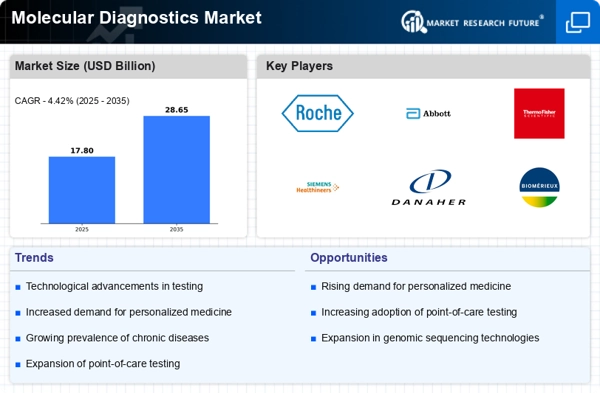

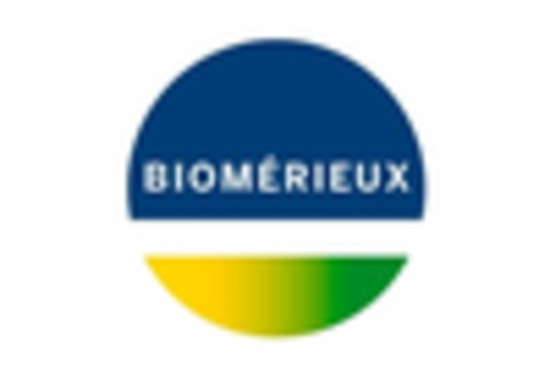
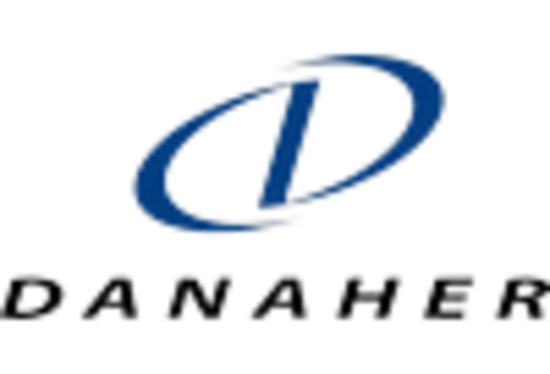
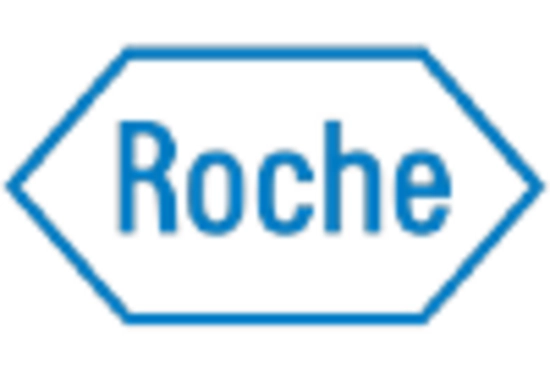
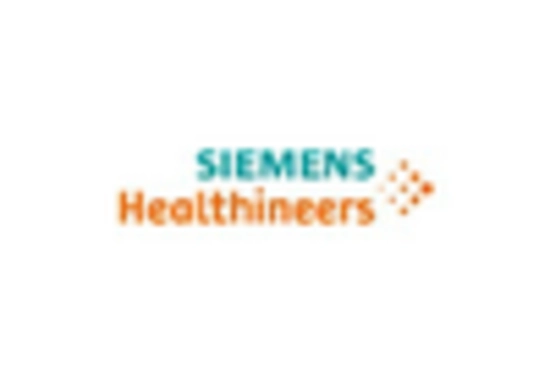
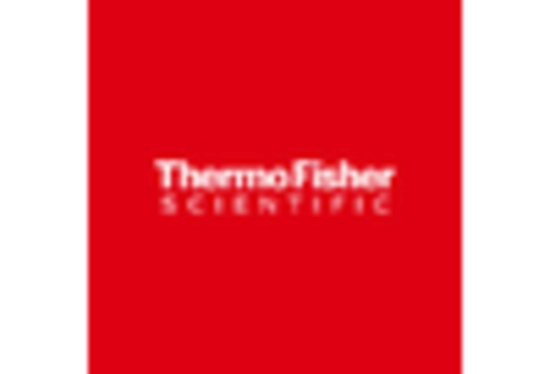

Leave a Comment